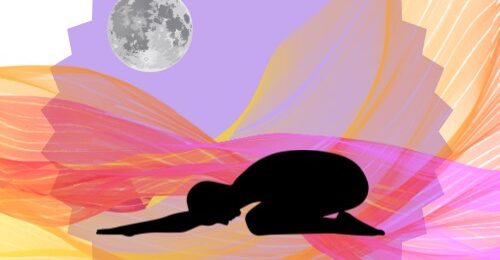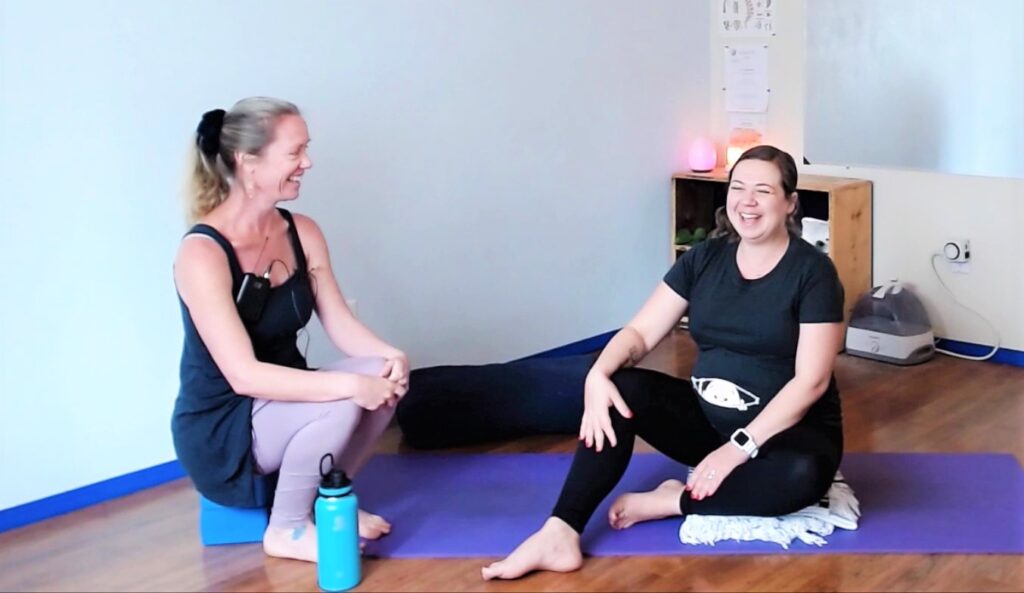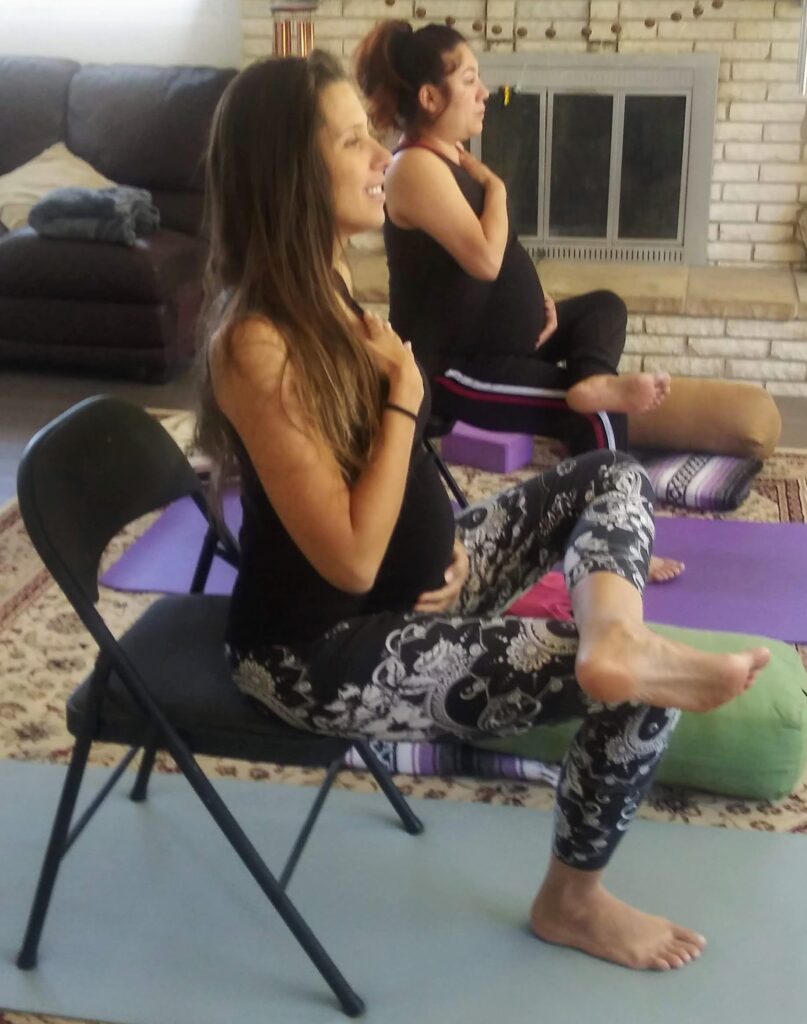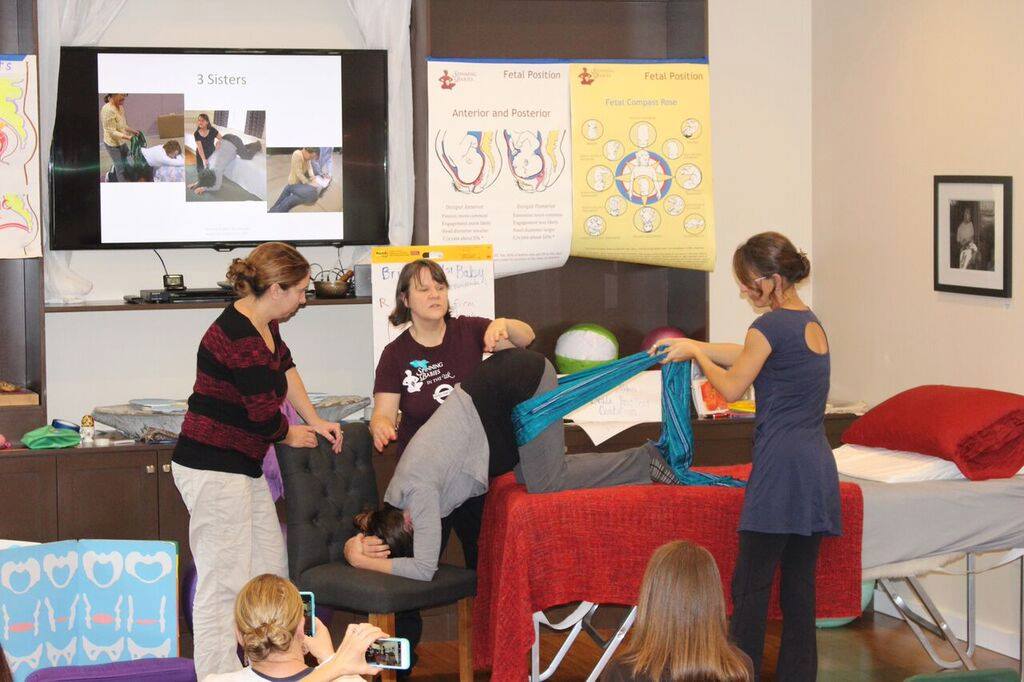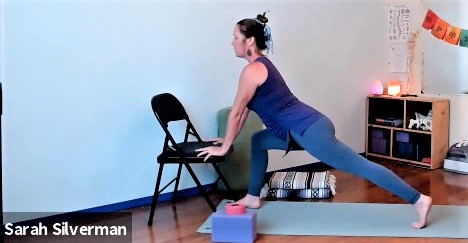10 THINGS TO DO IN BABY & ME YOGA
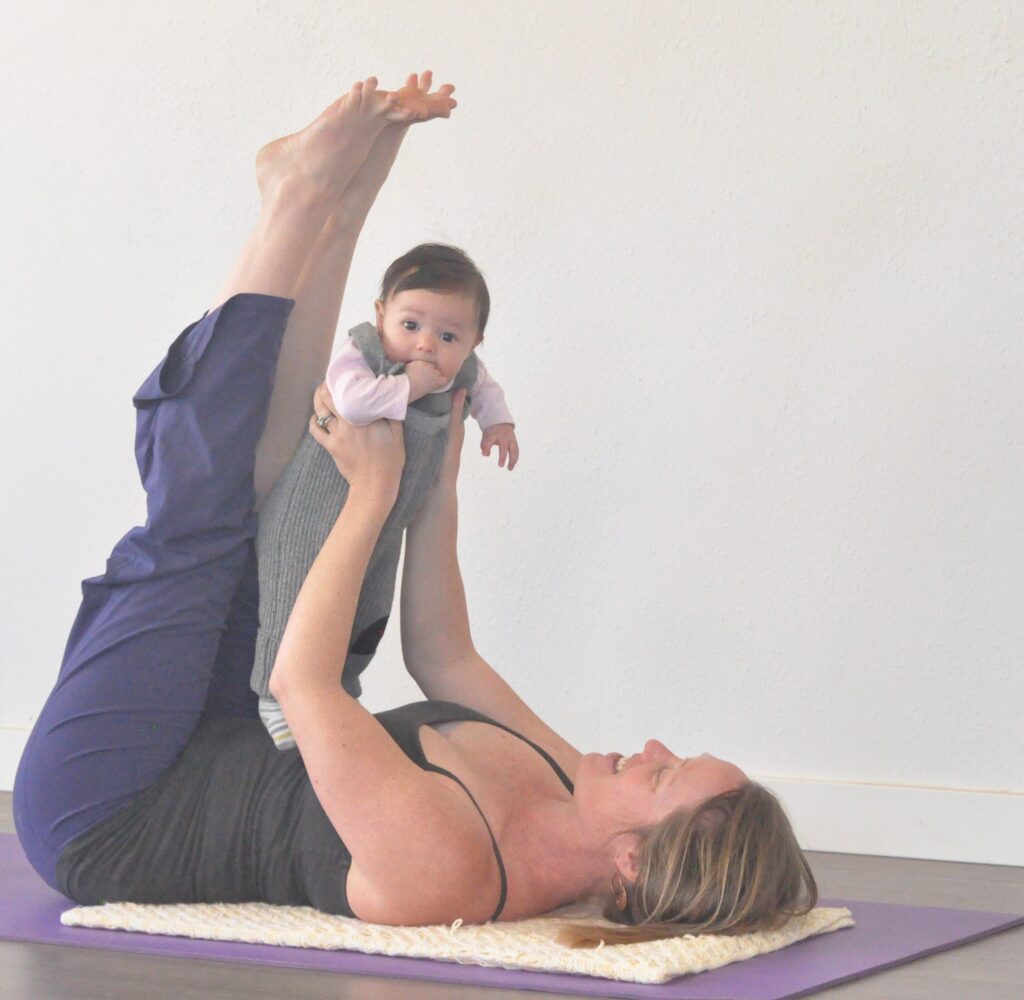
The first and largest accomplishment is arriving. It’s no small task to get packed and leave the house with a baby, but I promise you that it will be worth it! Give yourself plenty of time to arrive so that you have some time to set up and acclimate you and your baby to the space, whether you’re joining in-person or online.
Before class begins is a nice time to meet and chat with the instructor and other mamas and parents. A yoga practice is all about “arriving” into the body and into the present moment, so let yourself go through this process in the room (the physical or virtual).
Now, actual “things” that we do in class:
- Viparita Karani with the low back raised on a bolster. Not only does this restorative posture just feel great, but it has a long list of unique benefits for most humans, especially those who’ve birthed babies. This rejuvenating posture is great for “women’s health” and is one that I almost always sequence into postpartum and baby & me classes (as long as a person is not on their period). This gentle and passive inversion allows mamas and daddies the opportunity to receive the nervous system calming effects of having the body positioned in a mild inversion. These include parasympathetic nervous system stimulation to help calm the often frazzled nerves of new parents, enhanced circulation to the pelvic region and uterus, which aids in postpartum recovery and overall feelings of wellness, enhanced circulation to the heart, lungs, throat, and head, which among many things helps aid in proper functioning of the thyroid and pituitary glands, which are crucial for hormonal balance and fertility, and helps the abdominal and pelvic floor muscles to gently lift and lengthen, which improves their recovery and functioning. It is sometimes a challenge to get the low-back on the bolster, especially if there is a baby on the lap! If you’re unable to get your back up on the bolster, start out doing Viparita Karini without a bolster. Hold the posture for as long as it feels great to you, 3-15 minutes.
- Ribcage-Focused Breathing is a gentle way of breathing that encourages us to utilize every region of the lungs. We do this by focusing on the ribs moving or “blossoming” open to the sides, back, and front of the ribcage with each inhale and softening back in and down with each exhale. This helps the diaphragm move maximally up and down (as it should) with the breath and gently restores core muscles while soothing the nervous system. This type of breathing is revisited throughout class, and it feels great!
- Gentle Hip-Opening Postures, like Eka Pada Raja Kapotasana PREP variation (Pigeon Pose Prep), Agnistambhasana (Firelog Pose) variations with one leg or seated on a chair, or Tarasana (Diamond Pose). All of the postpartum sitting involved in feeding and caring for a newborn baby results in tight hips for many new parents, which echoes through the body and usually leads to other imbalances and discomfort.
- Thigh & Hip Flexor Stretches. Hip flexors are shortened and tight in many new parents from all of the sitting that we do in caring for our babies. It’s kind of like the body is a little stuck in a seated position, so we need to do things that are the opposite and take our bodies out of that seated position. Some postures that we do in Baby & Me Yoga to help lengthen the fronts of the thighs and the hip flexors include: Pigeon Pose followed by an easy thigh stretch that involves pulling the heel up towards the buttocks. I do this variation of allowing the bottom to completely drop to the floor on one side versus the “traditional” posture of keeping the bottom off of the floor to avoid the high possibility of a postpartum body collapsing and overstretching the ligaments and joints, which are still affected by the hormone relaxin, and would therefore place unnecessary stress on them, possibly leading to more pelvic instability, pain, and injury. Go easy. We want to target stretching the actual muscles and avoid any collapsing into postures, which is important in all bodies but especially so in bodies who’ve recently birthed babies.
- Gentle Low Back Openers. Many mamas come to class hoping for some of their low back stiffness to be alleviated. Postures we do in class often include: Balasa (Child’s Pose), Adho Mukha Svanasana (Downward Facing Dog Pose) variations, Uttanasana (Standing Forward Fold) with bent knees and a lengthened low back, Paschimottanasana (Seated Forward Fold) with a lengthened low back, and Tarasana.
- Singing Songs to Your Baby along with the class when you’re in postures that do not compromise your body. This is the perfect time for you to gaze into your baby’s eyes while they enjoy hearing your beautiful singing voice, which no matter how you think you may sound, your baby is deeply soothed by hearing your voice. The heart rates of babies slow down when they hear the familiar voices of their parents and caregivers. Singing also stimulates the vagus nerve which helps us relax and be in the moment.
- Mindful Walking for a few minutes inside or outside, if the weather is nice. The practice of mindful walking can be a wonderful way to see how mindful breathing and feeling the feet landing on the ground can be inserted into any part of one’s day, even during those long nights of little sleep or those challenging moments of growth and transition in your baby (and yourself). A few minutes of mindfully walking with your baby may be an invitation to remember to take, even 1, deep breath during a hard moment of parenthood. This won’t make the challenge disappear, but it may soften the edges and help us get through the time. Notice how your baby responds when you drop into your body. And, know that this won’t always be the case.
- Downward Facing Dog with the Feet Together, the knees bent, high on tippy toes, and the bottom super high. This inverted position helps one access and tone their inner thigh (adductor) muscles, the pelvic floor muscles, and the low belly muscles (transverse abdominals). It also gives the belly tissues and uterus a little lift and a break against the usual pull of gravity and helps the front body and chest also lift and open, which often feels nourishing and energizing. We often build into variations of dog on tippy toes and on a block against the wall, and when one is feeling strong and open enough over time, they may choose to eventually walk their feet up the wall hip height for an inverted L pose.
- Chest and Shoulder Openers are the number 1 types of postures that participants in Baby & Me classes recommend. The feeding and caring demands of the first year (or few years) of a baby’s life are extremely hard on the caregiver’s body. Already, from nearly a year of pregnancy, a person’s chest and head has, most likely, been pulled forward by their growing baby and breasts, which has compromised their natural spinal curvatures, and thereby placed strain on the shoulders and neck regions. Similar patterns usually get carried into early motherhood, as a mama is looking down, holding, and caring for their little one almost constantly. The body may also not be getting proper rest for some, so recovery and healing may be taking an extra long time. This leaning forward position not only feels crappy, but it also decreases circulation to the breast area, which may affect milk production, and it decreases circulation and tone around the throat and thyroid gland region, which could have an impact on fertility and one’s overall state of having “energy” and feeling well. Simple postures, like a supported bridge pose, that help to gently open the chest and shoulders and align the neck and head are a must in postpartum classes.
- Block-Squeezing Utkatasana helps strengthen the inner thigh adductor muscles and stabilize the pelvis. One meaning of “stabilize” in this context is that by squeezing the block evenly from both inner thighs, the muscles are becoming symmetrically strong and other asymmetries around the pelvis may begin to shift into a more ideal place. The adductor muscles are one of many muscles that play a role in “holding together” the pelvis, and these muscles coordinate with the pelvic floor group of muscles and abdominals too – all muscles that are crucial in pelvic and spinal support. This intense posture allows one to feel how strong they are, which can bring a sense of energy and confidence to a new parent, which is so valuable in the first years of parenthood when we often question many of our decisions and ability to parent. We usually “swish” around colorful scarves while doing Utkatasana, which makes it much more entertaining for mamas and their babies.
Well, there you have it. This list could go on, but I’ll leave it at a nice and even “10.”
Postpartum and Baby & Me Yoga classes are offered weekly virtually and in-person in Albuquerque, NM. Baby & Me classes are geared towards those who’ve been fully cleared to exercise by their healthcare providers and for babies who have not yet begun crawling quickly. Baby Moon Yoga classes welcome all mamas, daddies, and caregivers.
